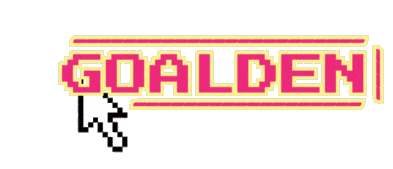Goalden: A Socially-Driven Goal Tracker
🐞 Challenge
Most goal-tracking apps feel either too rigid or too shallow: overwhelming users with structure or lacking real motivation. Students and young professionals often abandon these tools due to lack of flexibility, social accountability, or emotional support.
How might we make goal-setting feel fun, supportive, and sustainable?
🔧 Solution
Designed and developed a pixel-art inspired, gamified web app for setting and tracking personal or shared goals. Users can break goals into checkpoints, join group challenges, and visually track progress via timelines.
The app encourages motivation through community, customization, and progress—not punishment.
🙋♀️ My Contributions
- Led visual design direction, including color palette, pixel art integration, and UI layout.
- Built core frontend flows in HTML/CSS/JavaScript — including signup, login, profile, timeline, and goal creation/editing.
- Debugged edge cases and improved error handling, form validation, and real-time feedback.
- Created modular, page-based scripts to keep logic organized and scalable across views.
- Collaborated with backend and database teammates to ensure UI consistency with data schema and security rules.

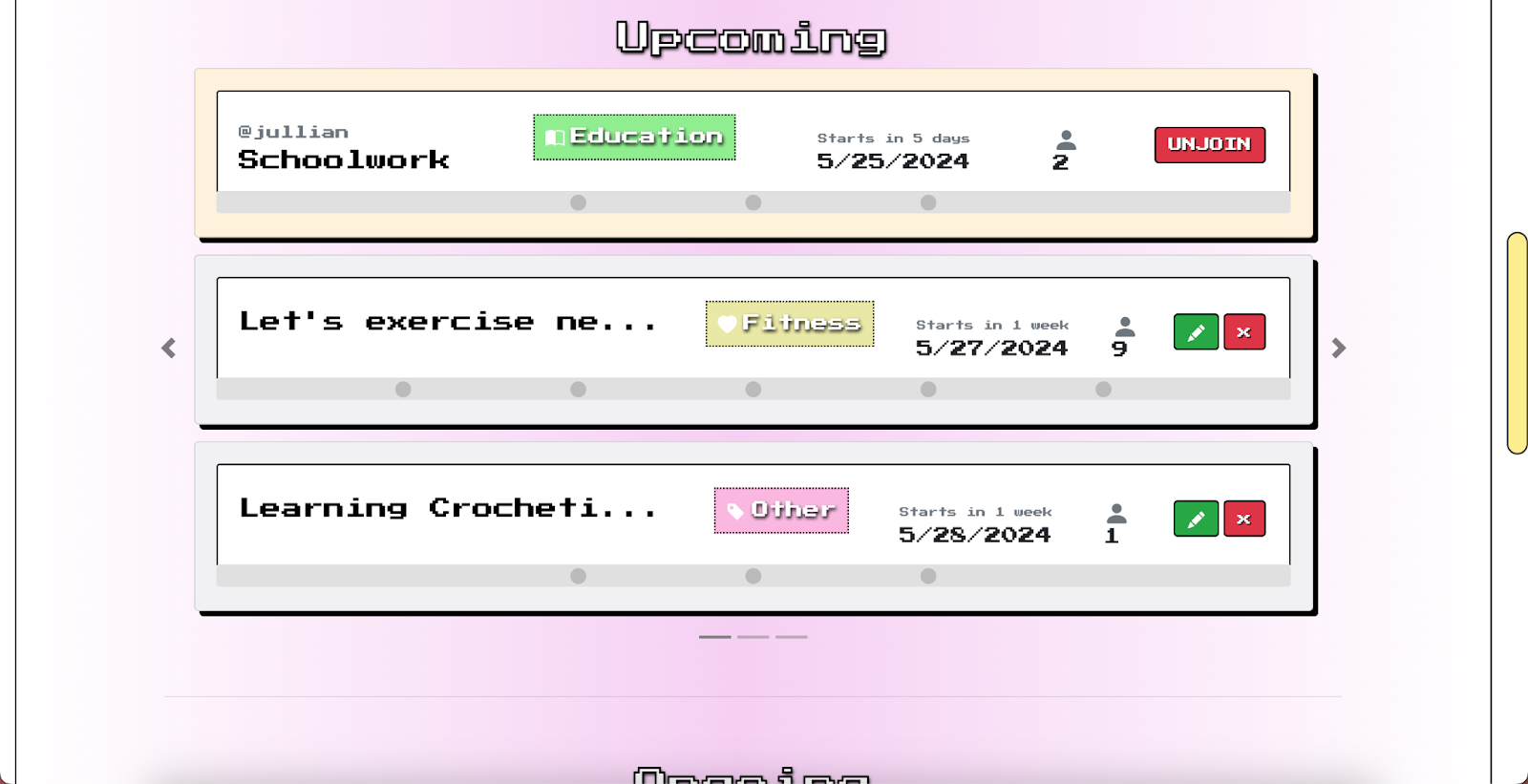
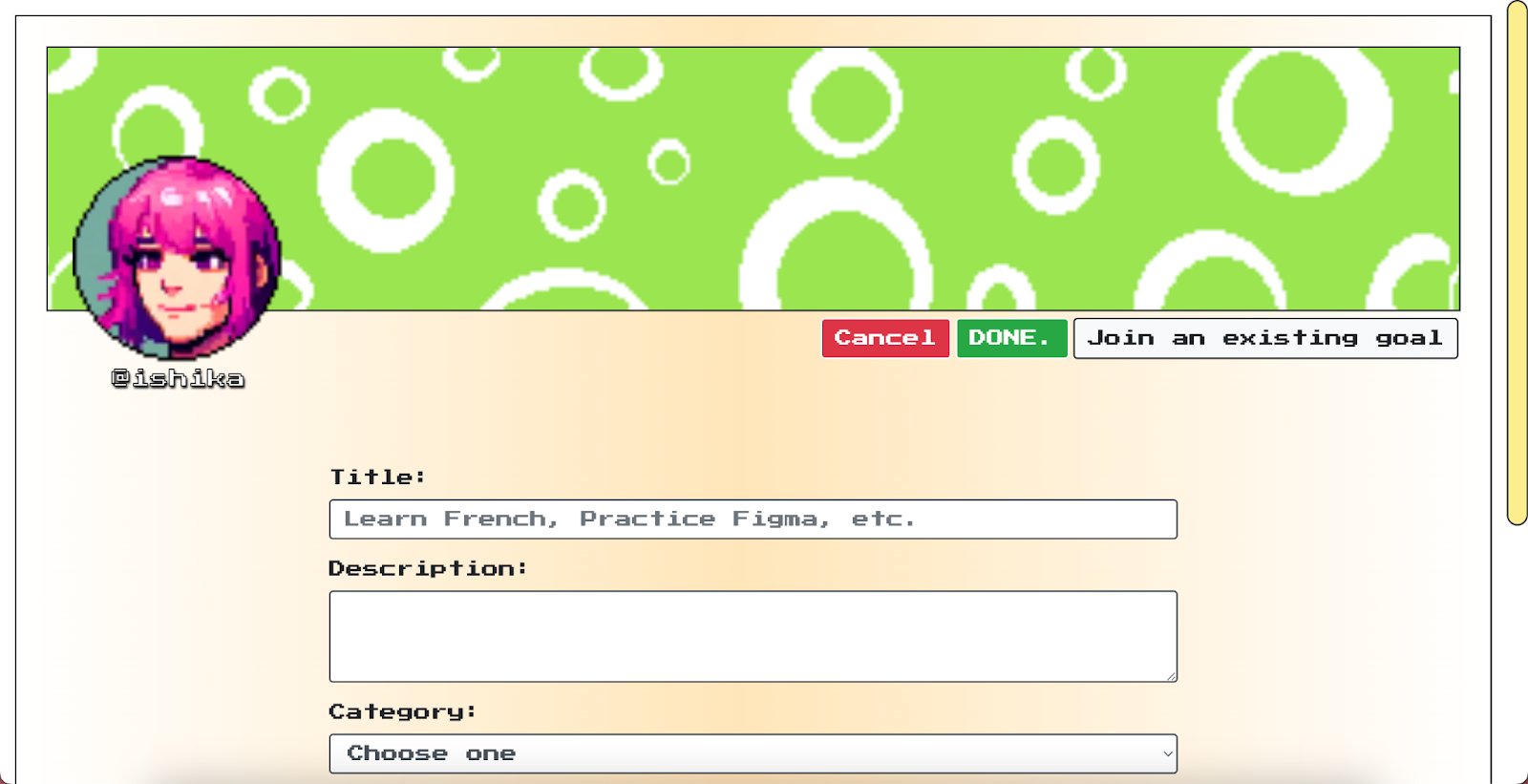
⚙️ Design Process
- Researched by conducting user interviews
- Defined core user needs
- Designed pixel-art UI mockups
- Built frontend components
- Tested user flows and edge cases
- Iterated on UX feedback
Interviews
Conducted 3 semi-structured interviews with college students to understand how they manage short- and long-term goals across academics, work, and life.

Workflow Analysis
To better understand existing behaviors, we broke down how users typically set, track, and abandon goals using their current tools (e.g. planners, Notion, reminders).
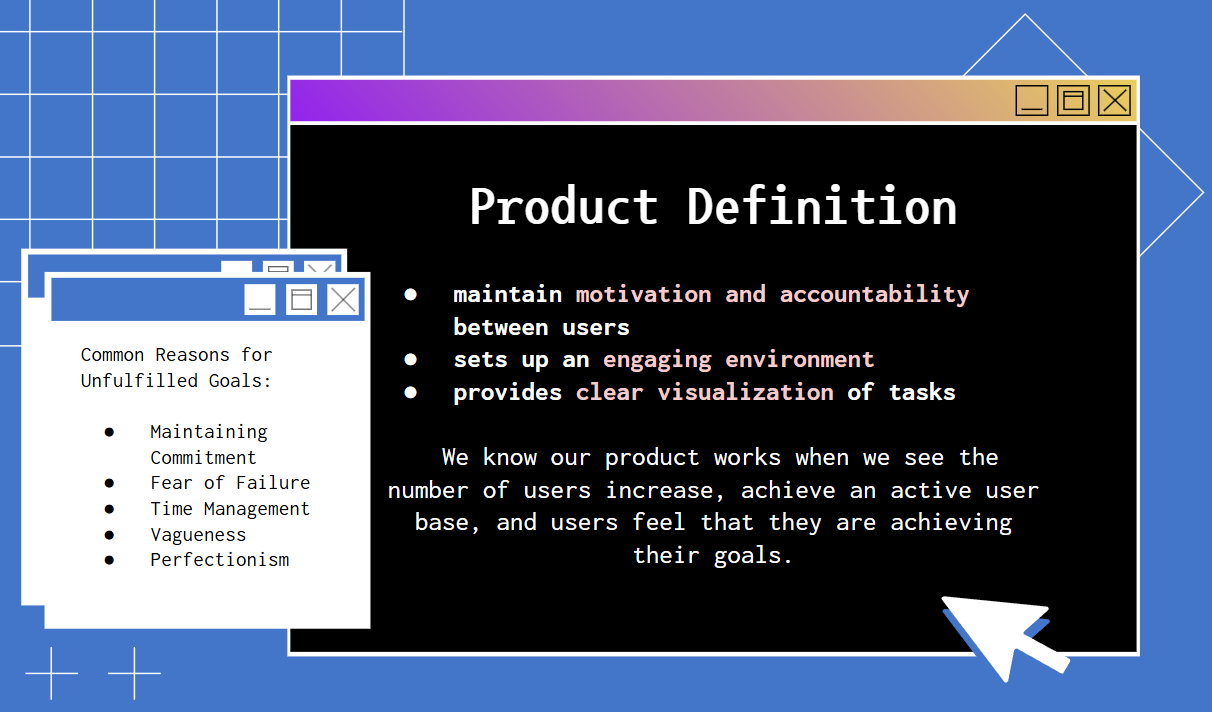
Competitive Analysis
Analyzed apps like Trello, Habitica, and MyFitnessPal, noting how they either over-indexed on productivity or focused too narrowly (e.g., only fitness or team projects).
Affinity Mapping + Thematic Analysis
After synthesizing our interview data, we used affinity mapping to organize user quotes and observations into meaningful groups.
Then we conducted a thematic analysis to define clear problem areas and user needs. These themes grounded our design decisions and shaped our product direction.

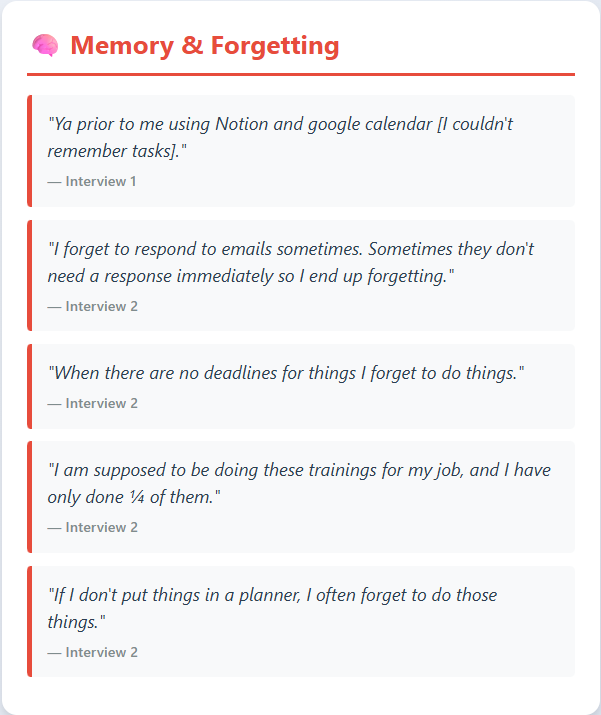


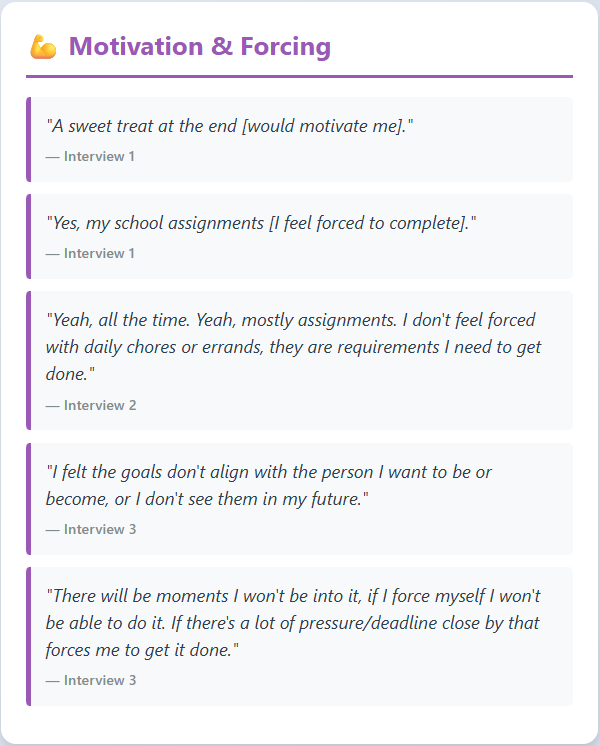
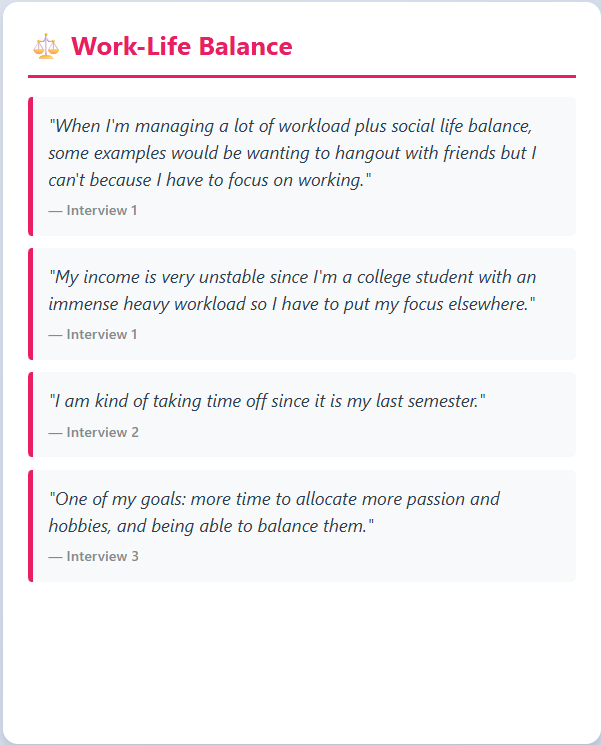

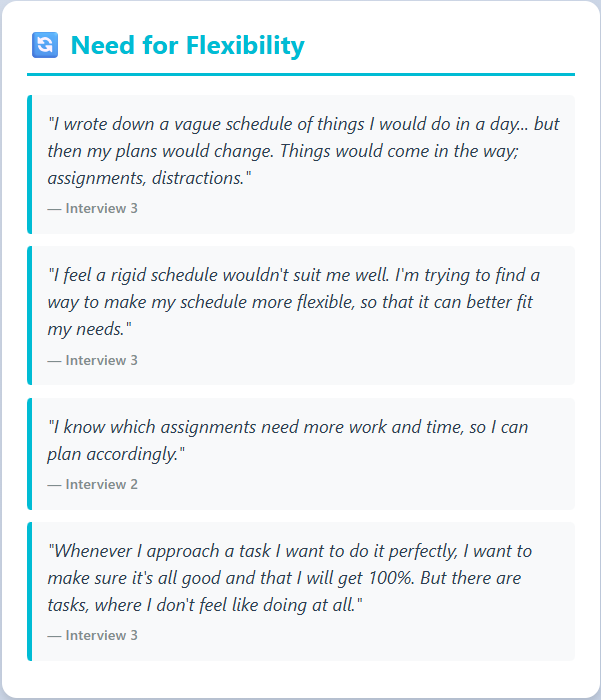
MVP
Defined our Minimum Viable Product around features that delivered user value while staying technically achievable.

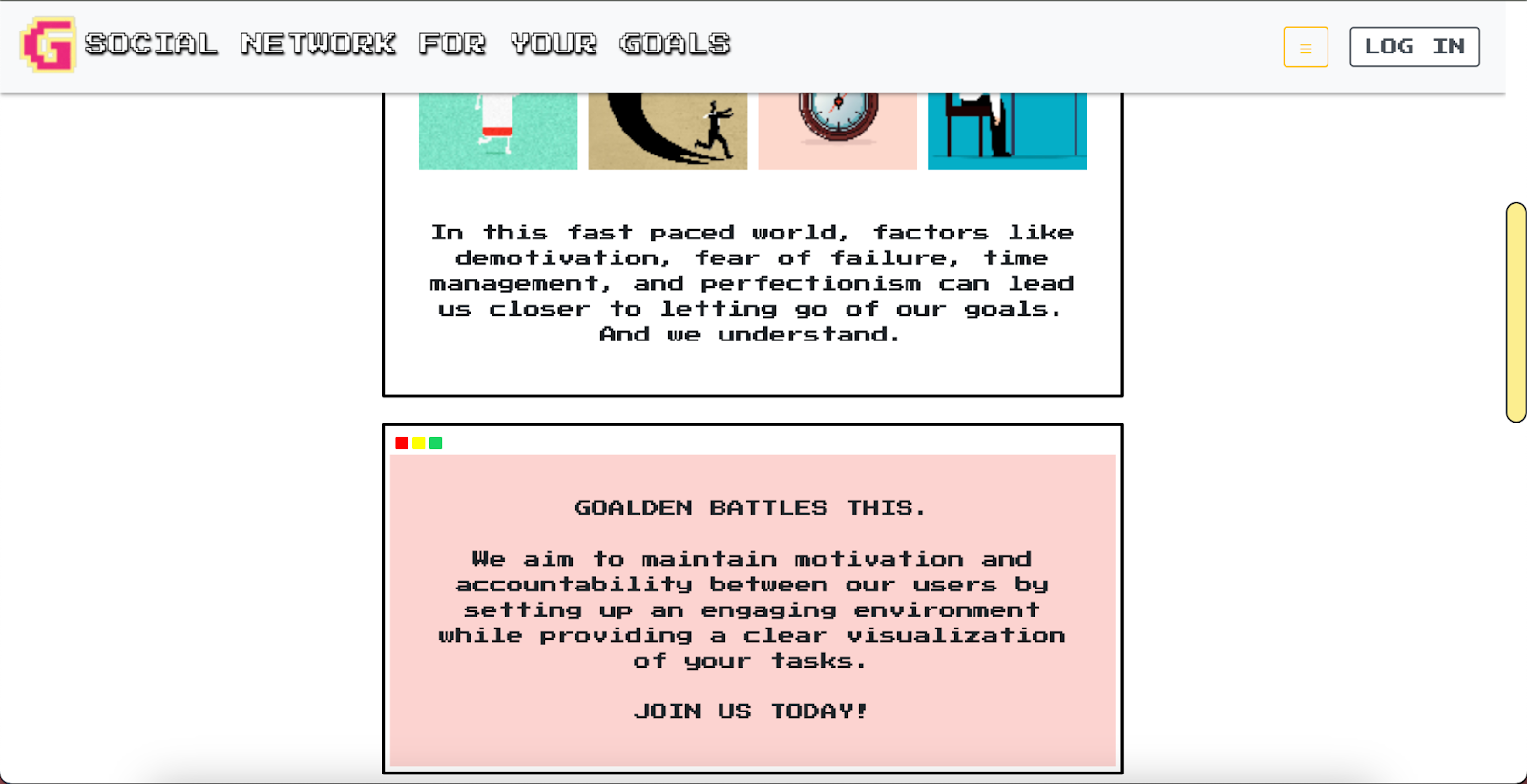

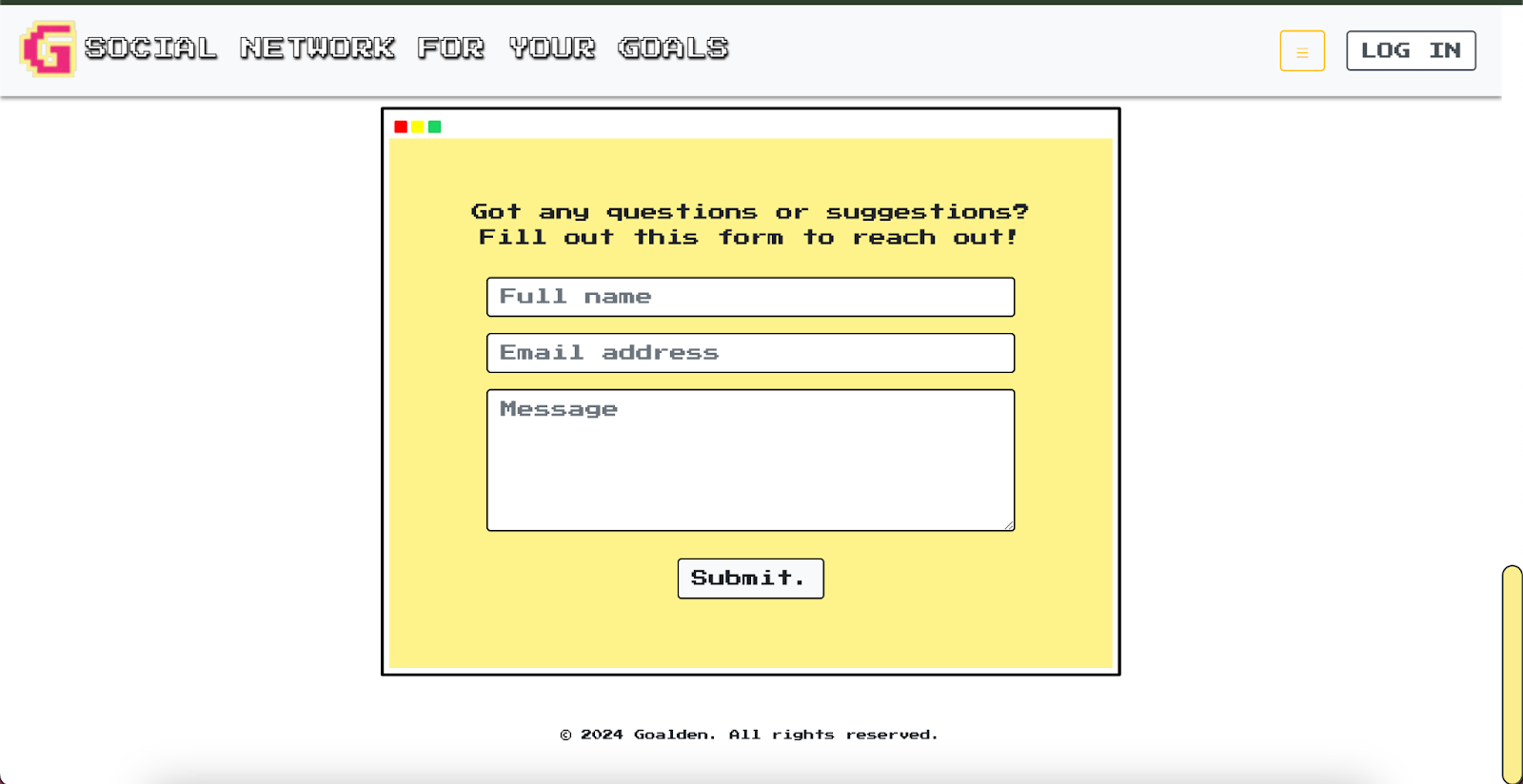
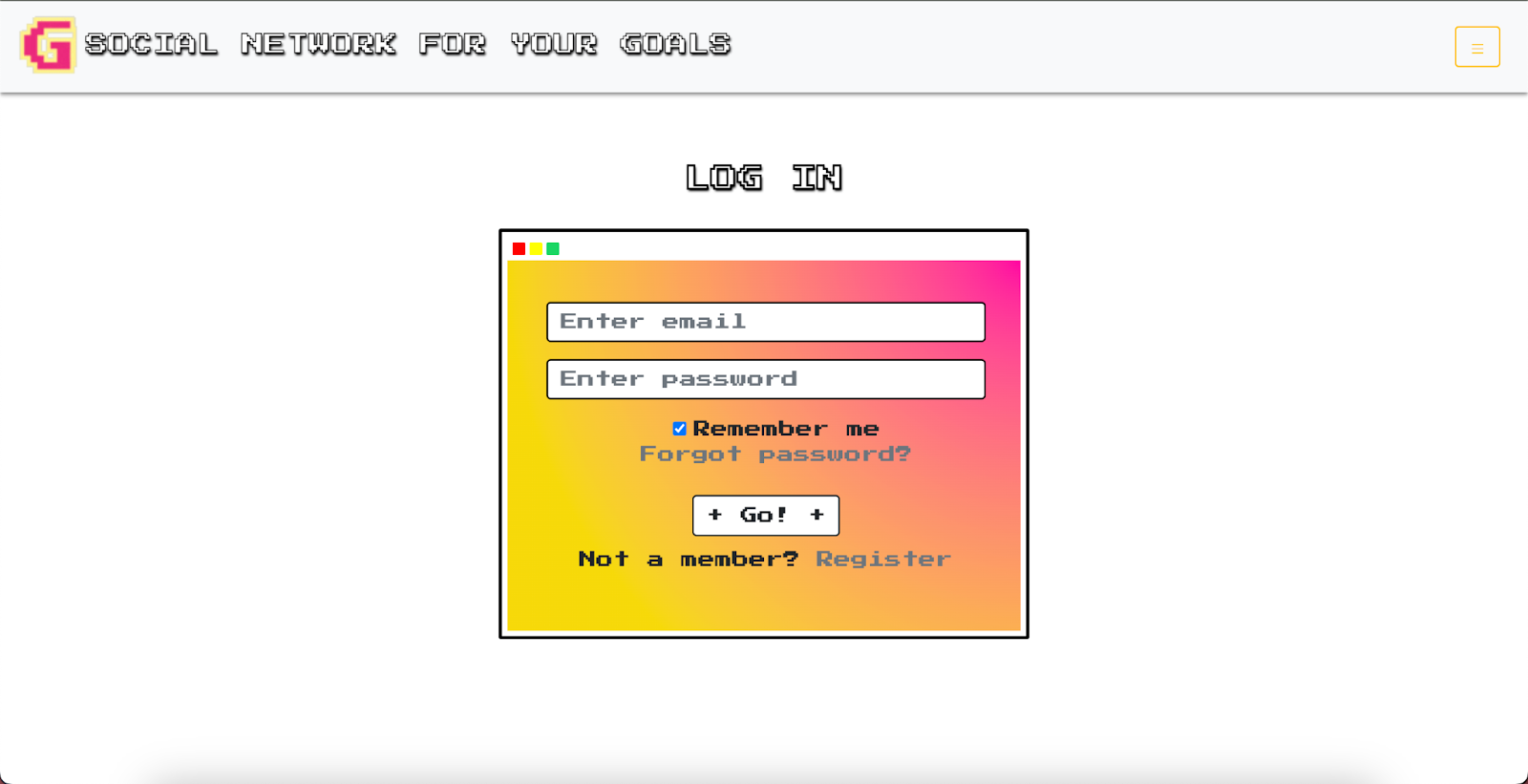
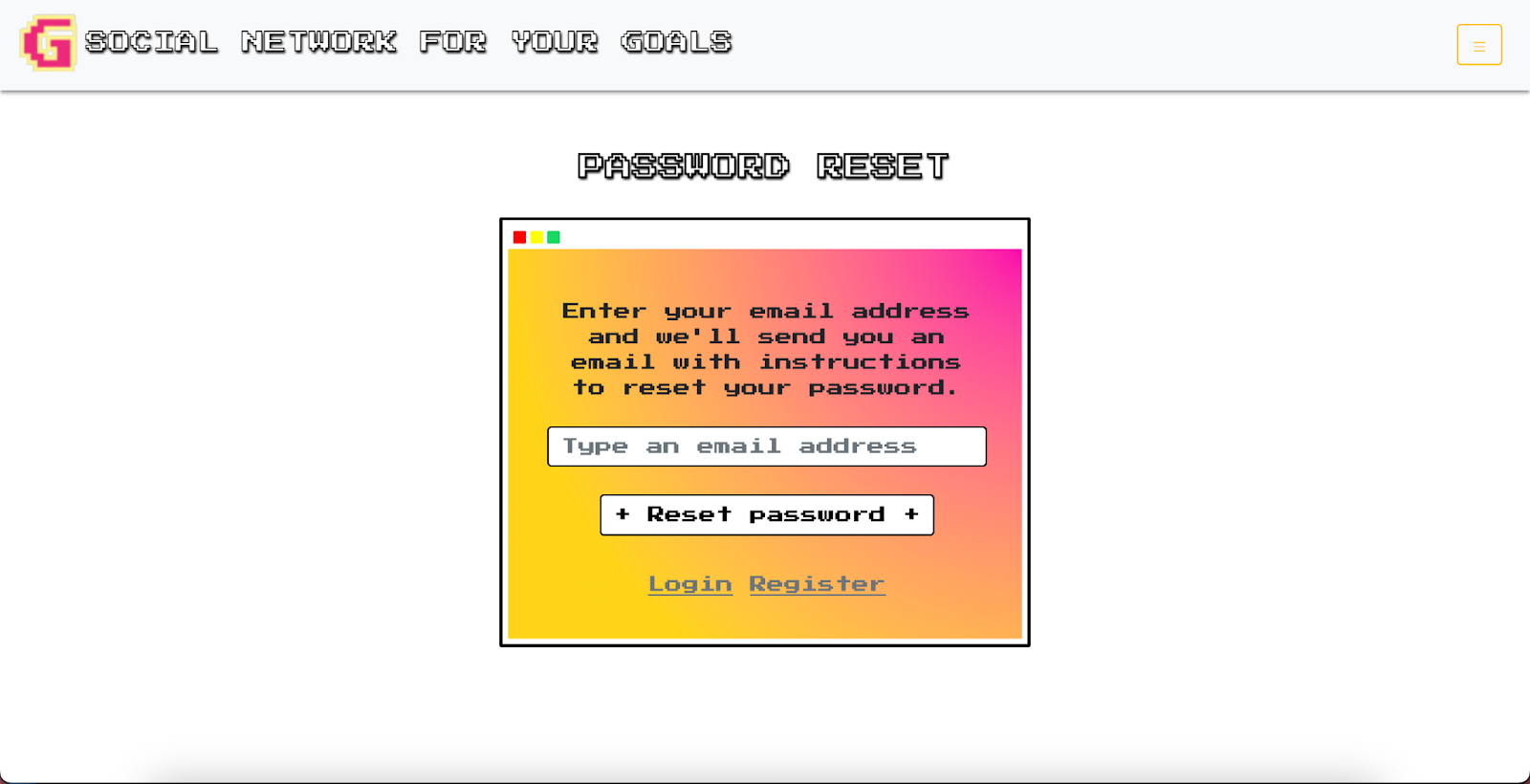
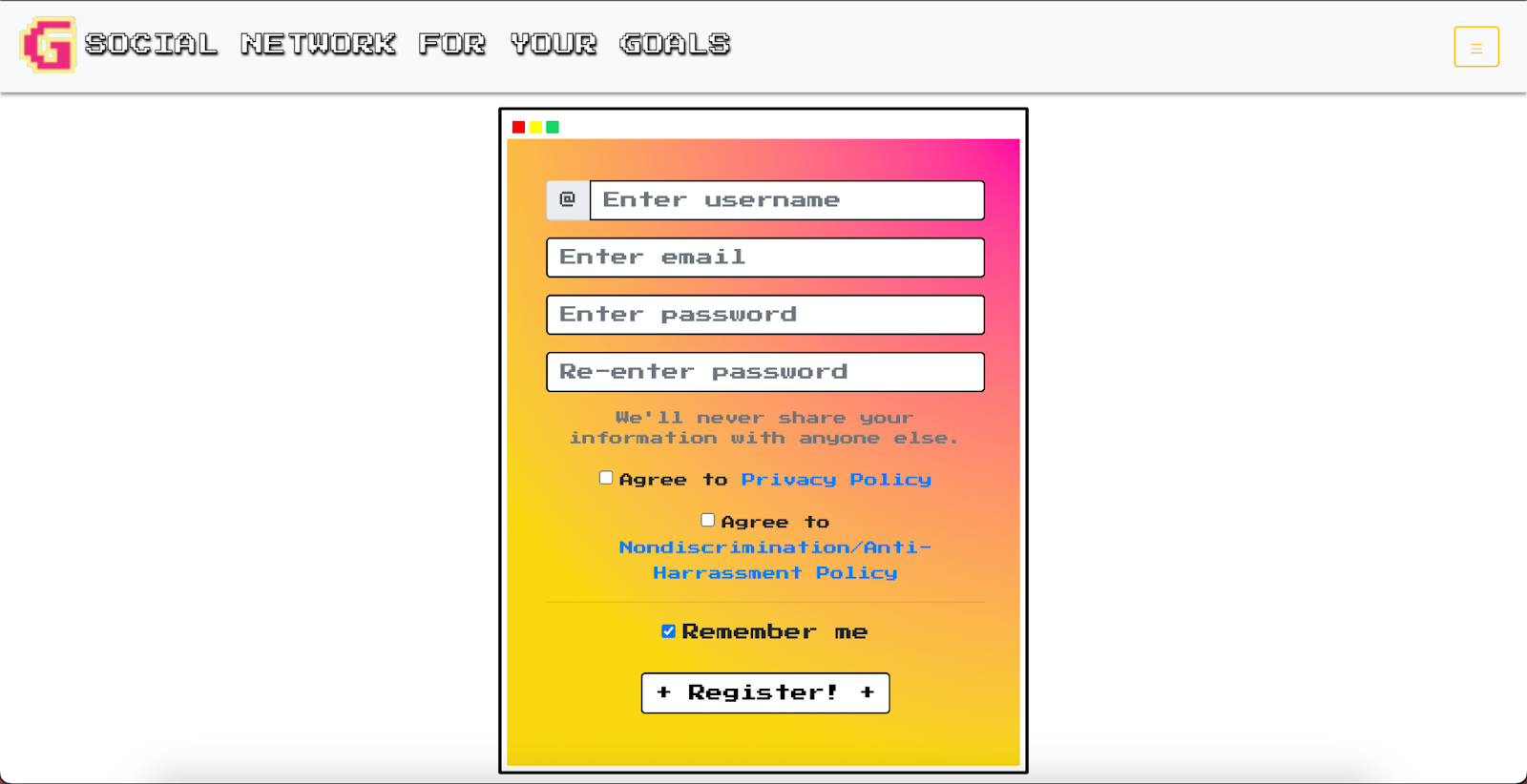


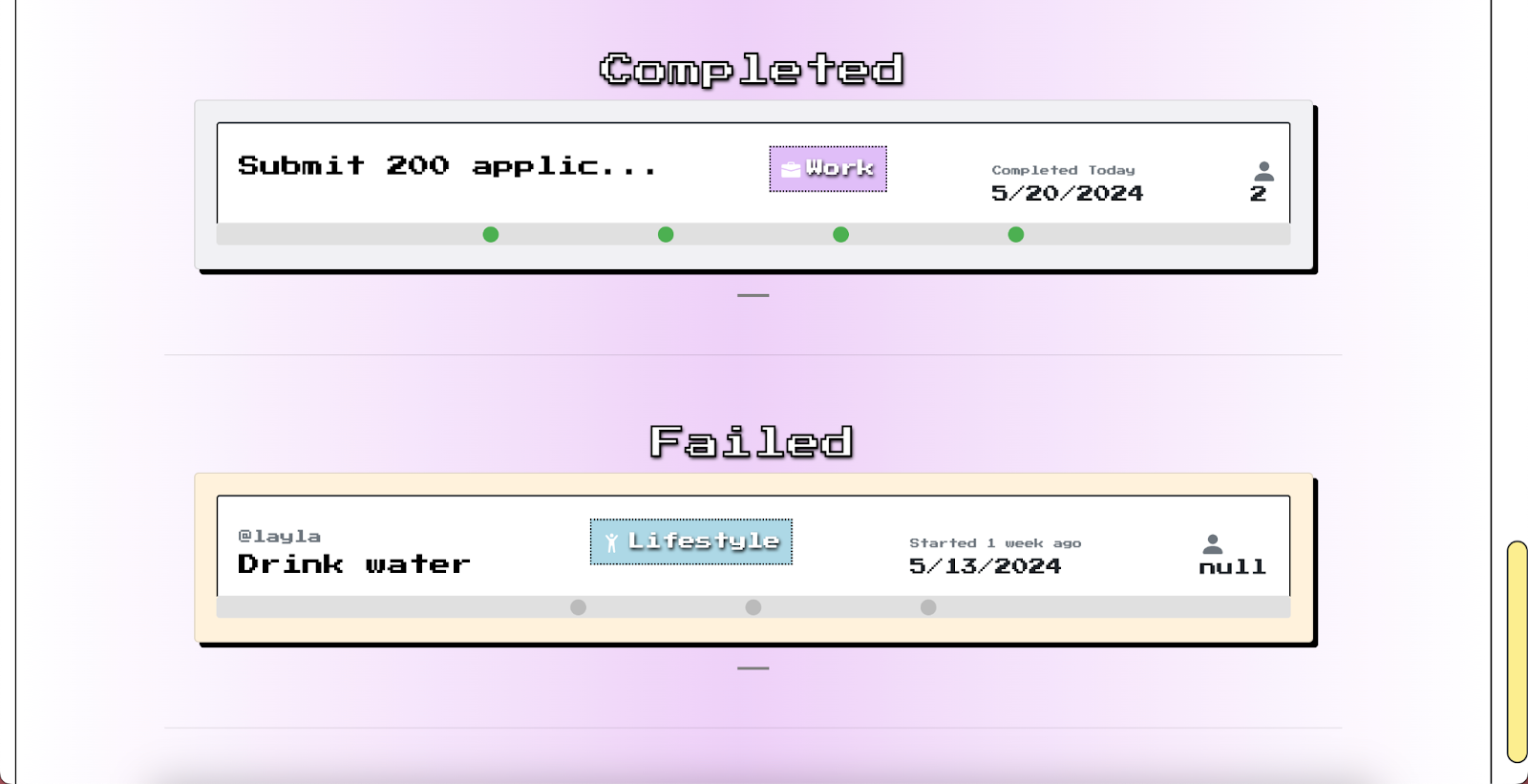


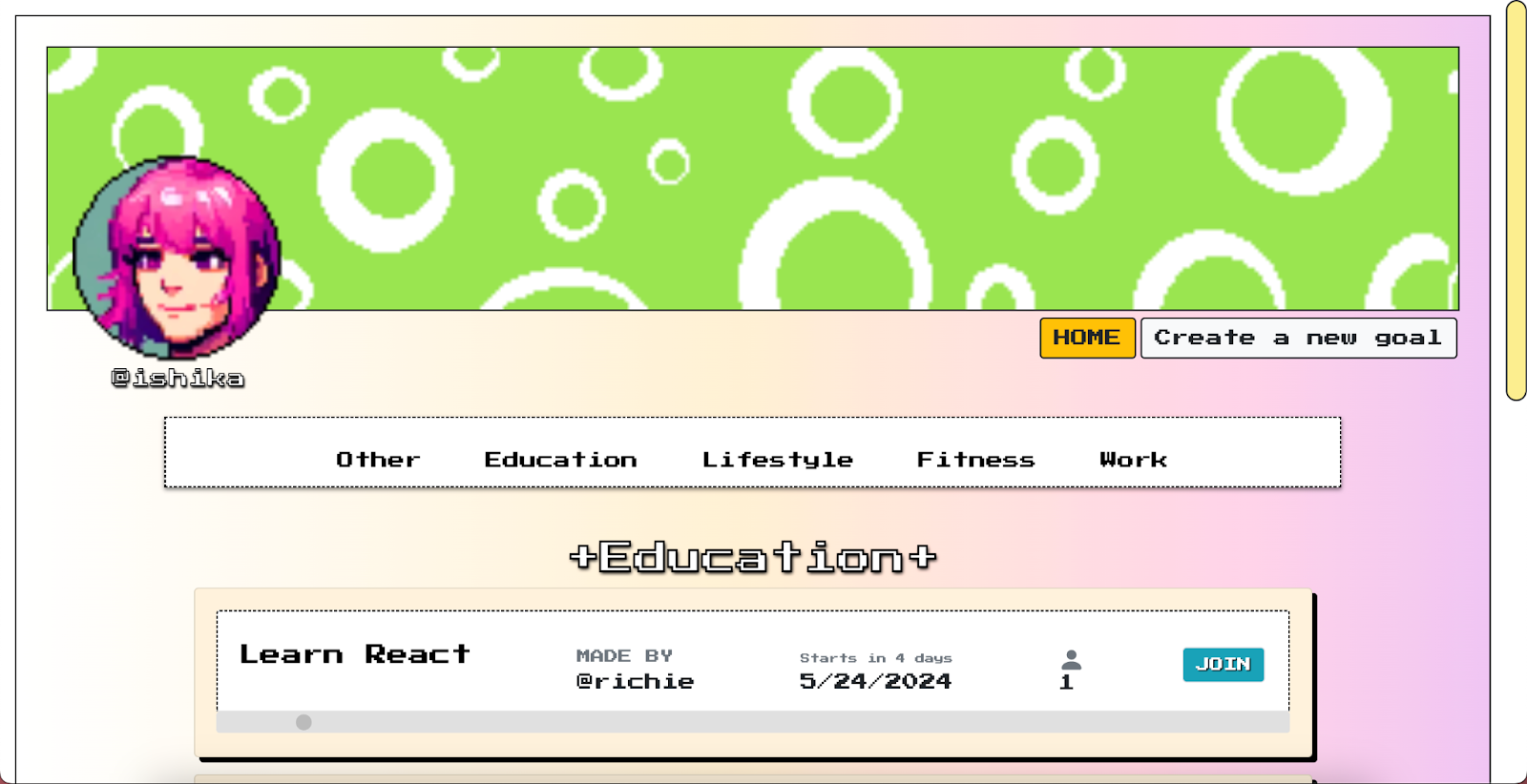
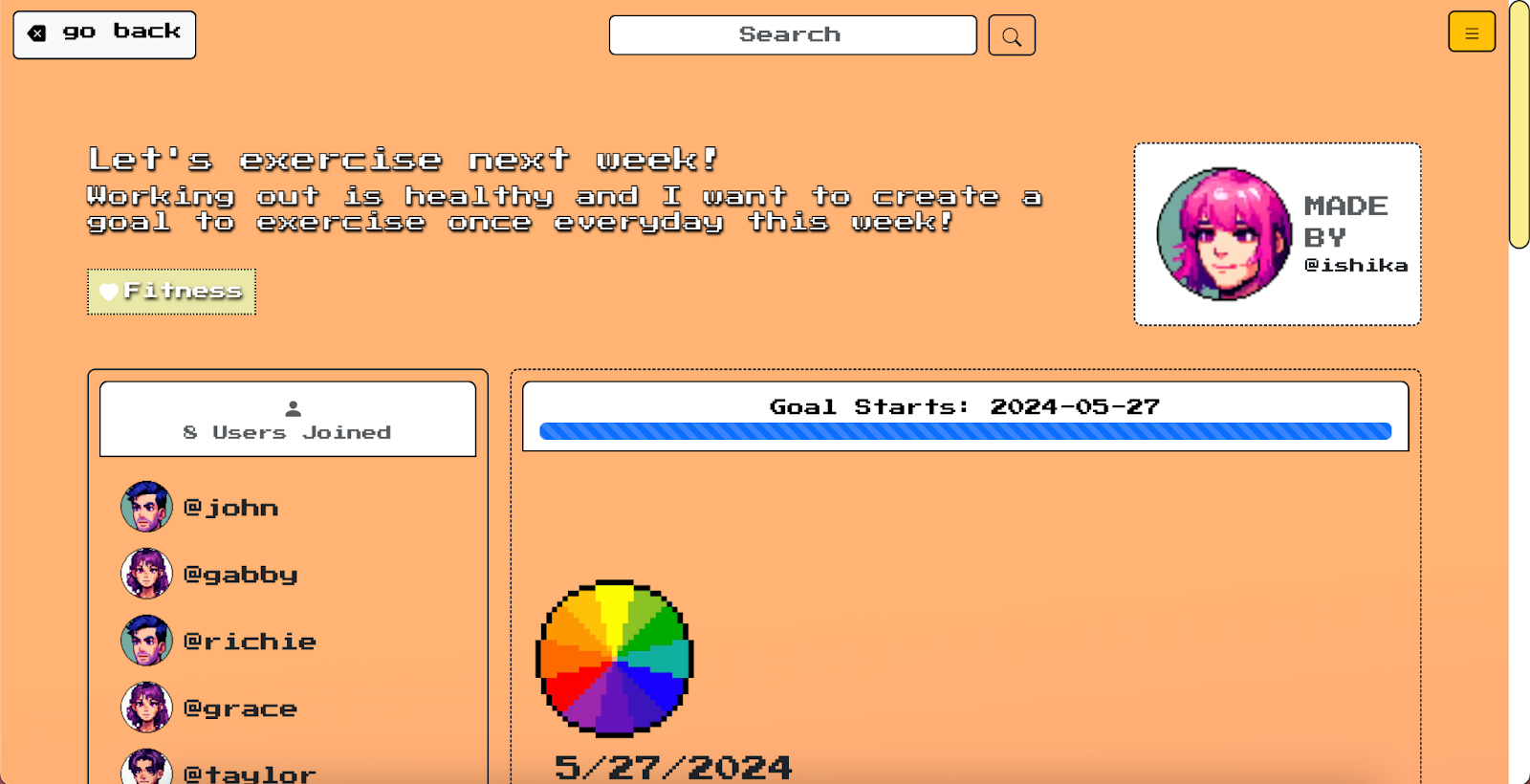

Deferred features like follow/following, private goals, and reactions for future sprints. By focusing on a narrow but deep MVP, we ensured we could deliver a polished, usable experience that matched our themes.
Storyboards
Mapped the emotional journey from goal-setting frustration to satisfying progress.
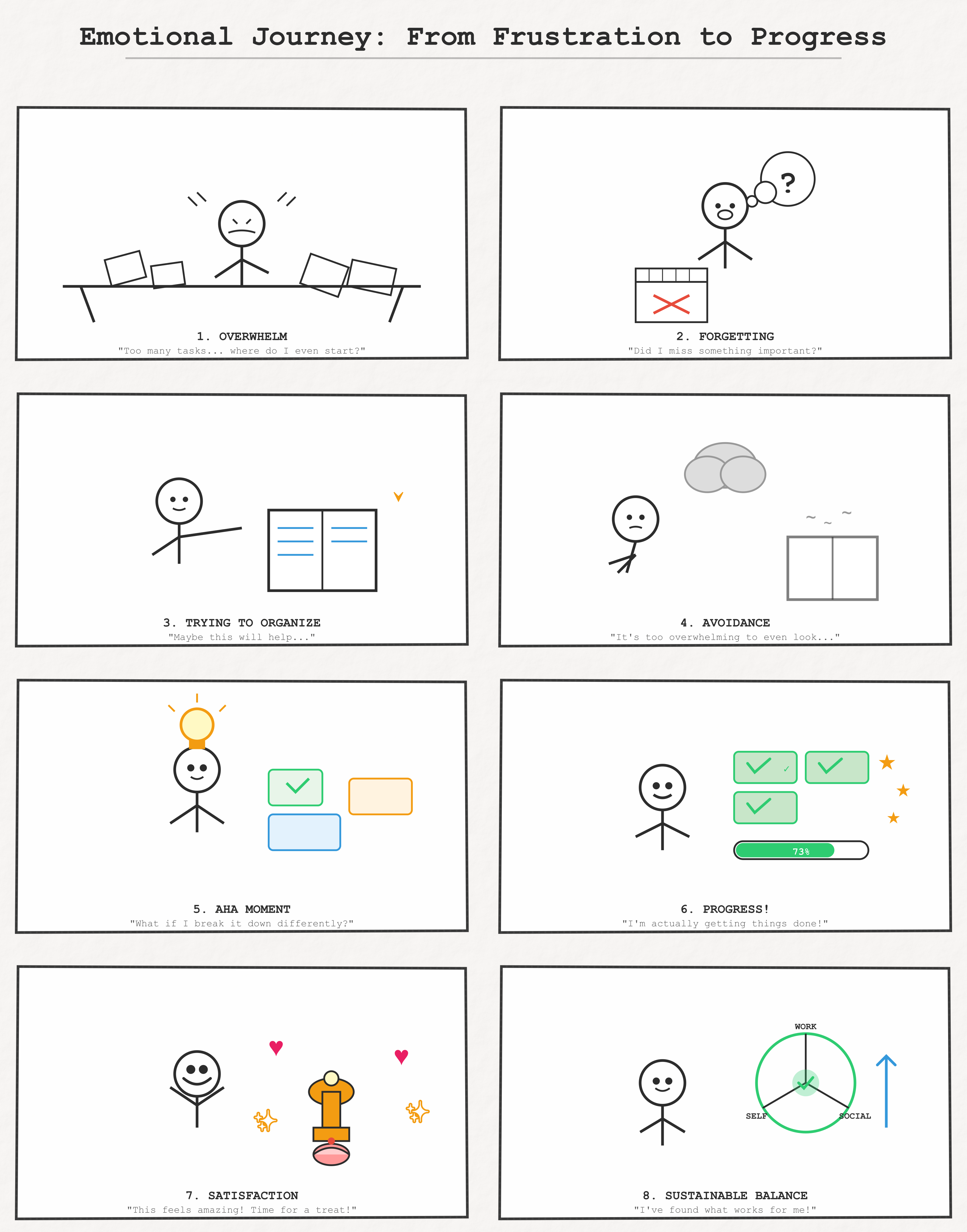
Feasibility Checks
What we evaluated:
- Could we create a dynamic goal timeline without a custom backend?
- Could user data and goal progress be securely stored and updated using Supabase?
- Could we support customization features (profile pic, background) within the MVP scope?
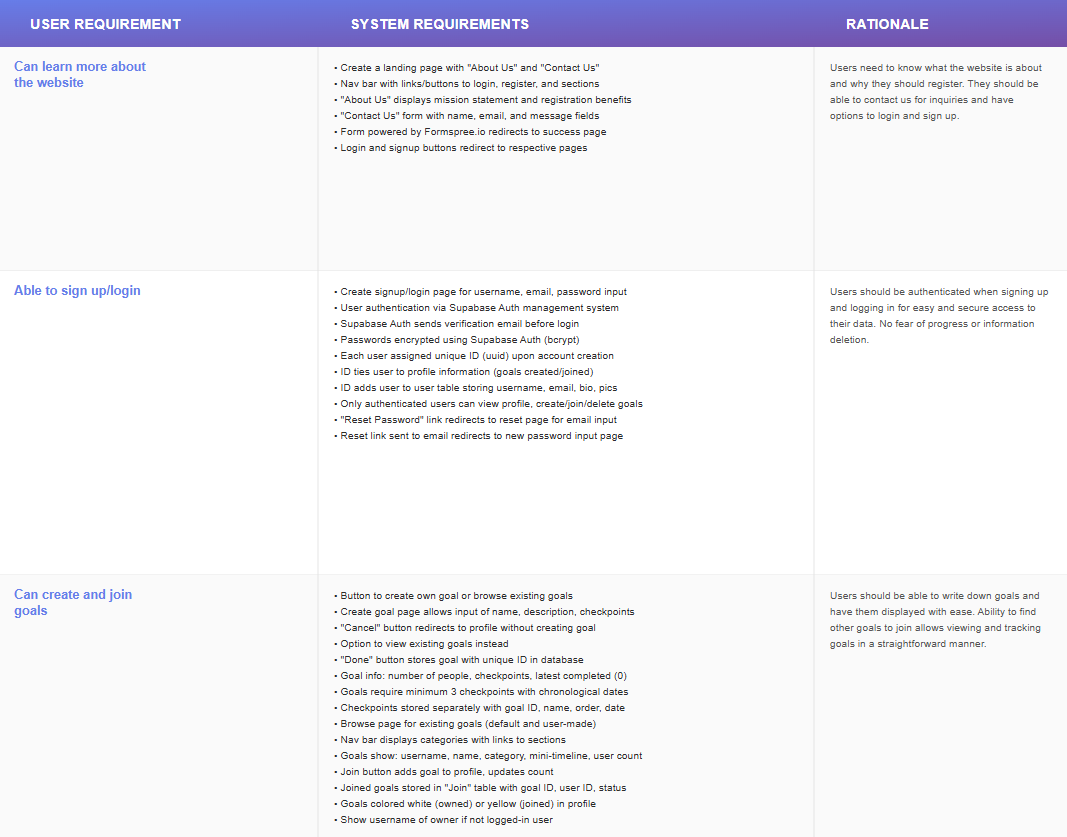
This led us to prioritize features that aligned with our frontend strengths and Supabase’s built-in functionality, such as:
- Auto-generated REST APIs
- Auth management and RLS (Row-Level Security)
- PostgreSQL relationships for users, goals, joins, and checkpoints
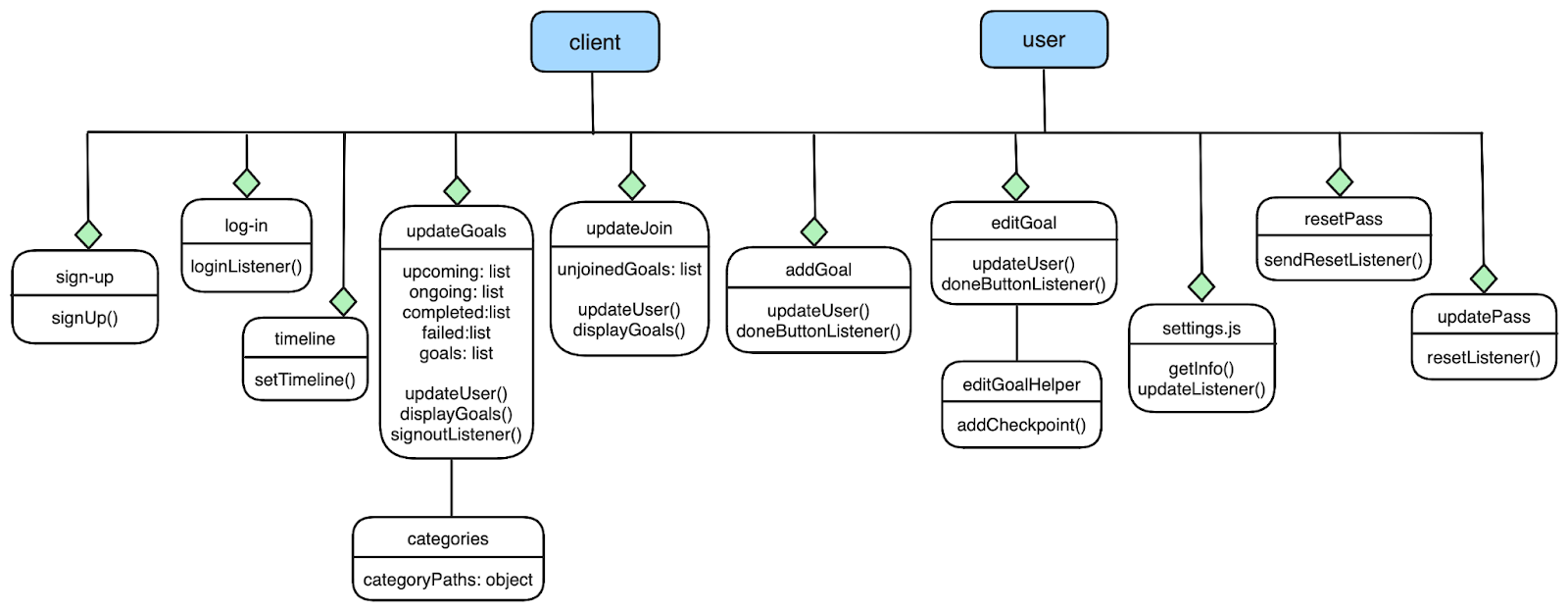
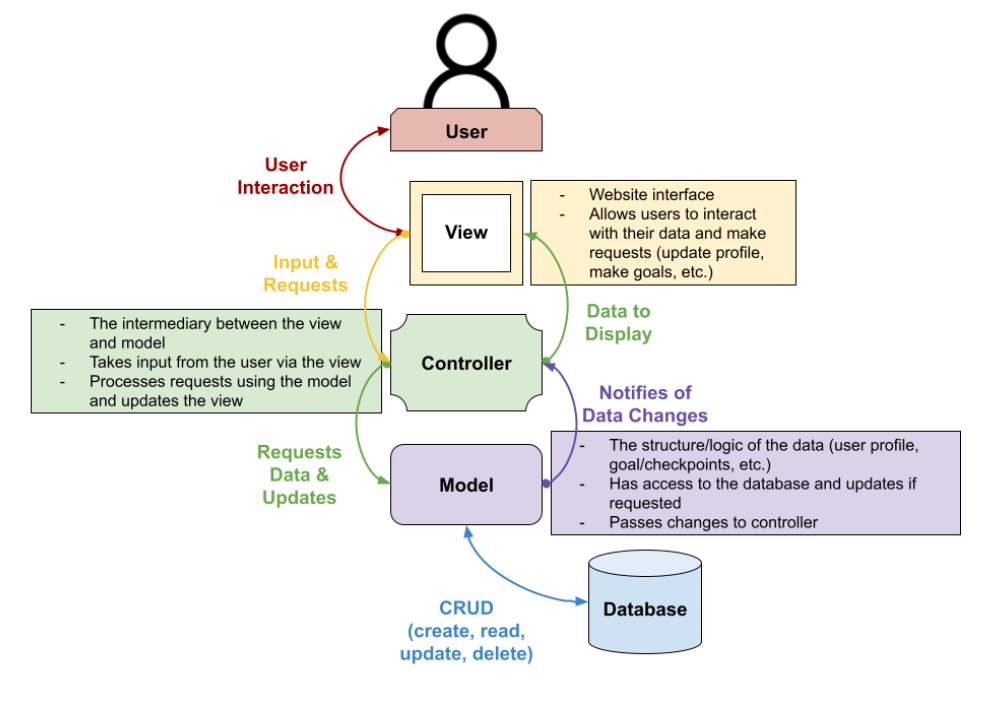
Testing
Conducted manual testing and flow validation to ensure stability, usability, and accurate data handling.
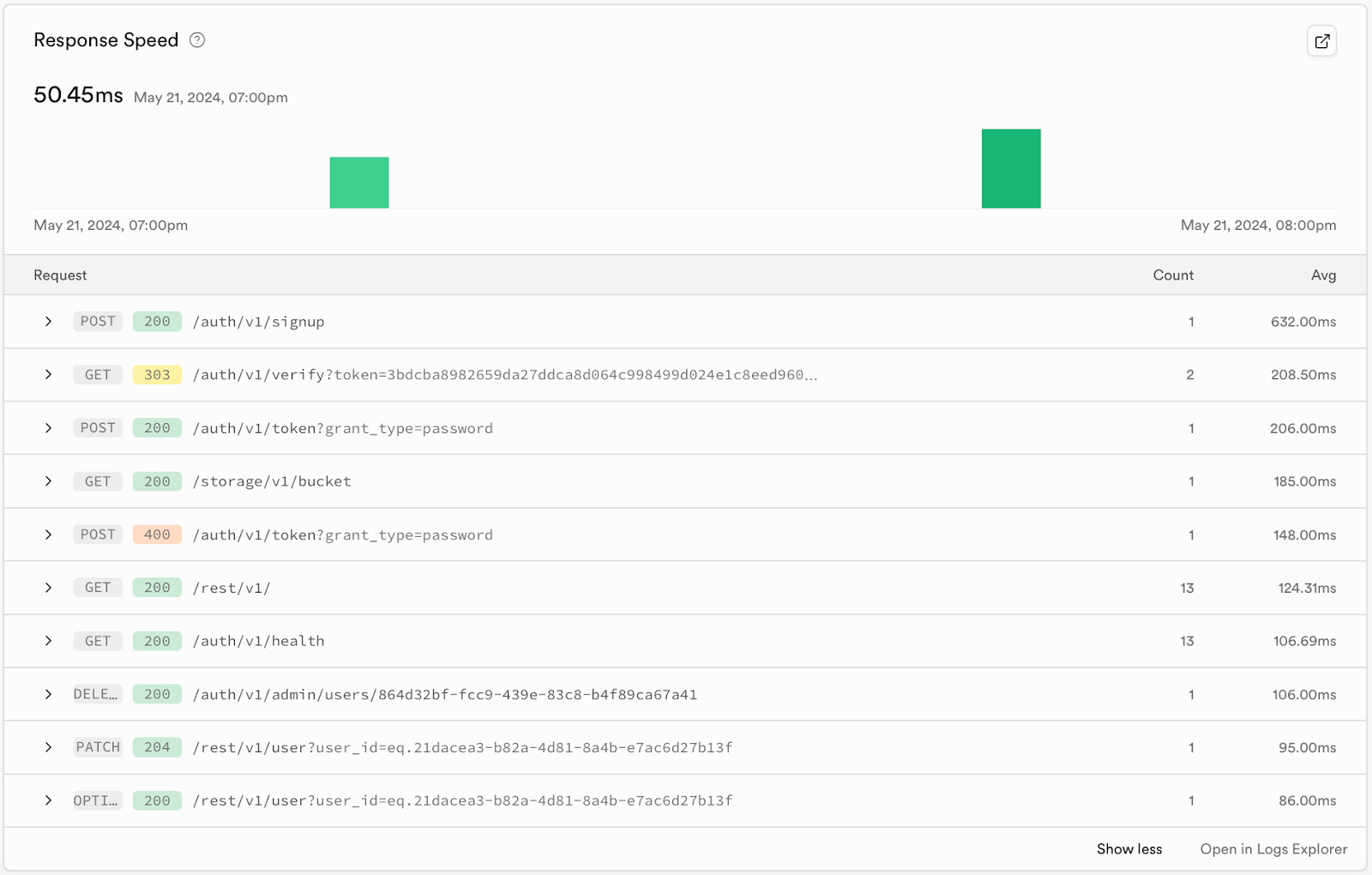

Used console logs, Supabase Reports, and in-browser testing to observe real-time outputs, debug issues, and confirm data integrity.
Iteration
Continuously refined based on feedback from peers, usability tests, and edge-case behavior. These iterations enhanced clarity, reduced user confusion, and made the experience feel smoother and more forgiving.
Refinement
Polished both the UX and visual design to align better with user expectations and emotional goals.
Looking Ahead...
Outlined potential version 2.0 features based on user interest and technical feasibility:
- 🧑🤝🧑 Follow/following system and public feeds
- 🧵 Private goals with visibility controls
- 🎨 More unlockable avatars and profile backgrounds
- 🔔 Reactions and cheers to encourage others
- 💬 Group chat and shared accountability challenges
- 📊 Progress analytics and motivational insights
